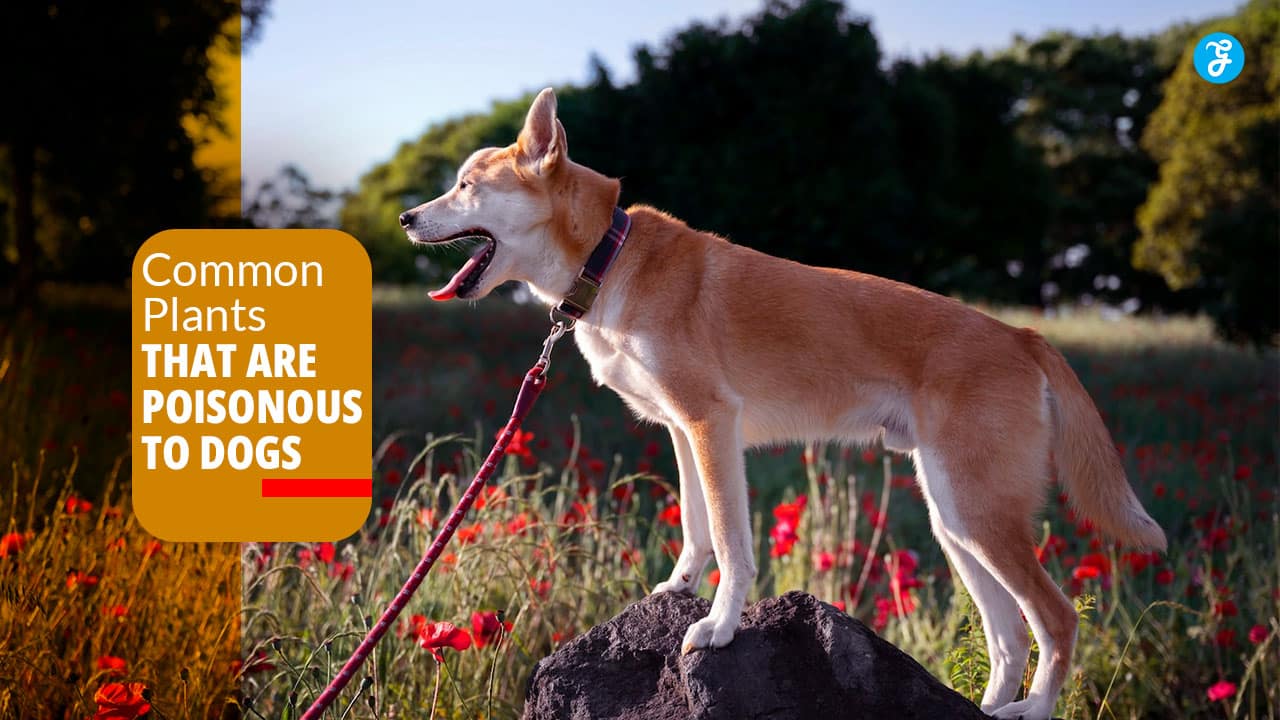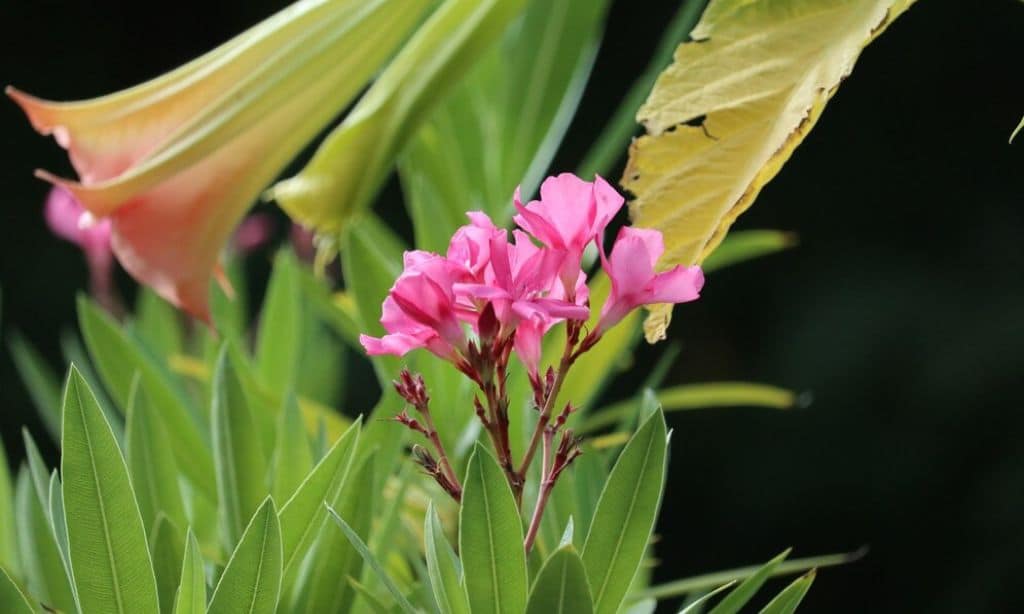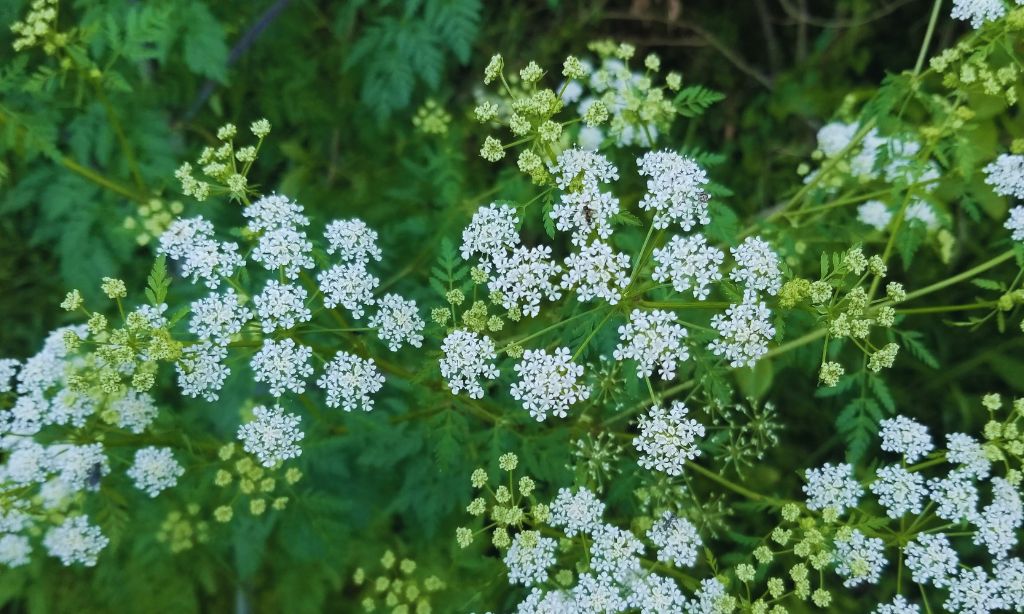Dogs love to explore the outdoors, but some common plants can be dangerous for them. As a pet owner, it’s important to know which plants might harm your furry friend.
Certain plants contain chemicals that can make dogs sick or even cause death if eaten. This knowledge helps keep your dog safe when playing in the yard or going for walks.
Many popular garden plants and flowers are pretty to look at but toxic to dogs. Some can cause mild symptoms like stomach upset, while others may lead to more serious issues.
Learning about these plants lets you make smart choices about what to grow in your garden. It also helps you spot risky plants when out and about with your dog.
1. Sago Palm
Sago palms are pretty plants that can harm your dog. They look like small palm trees but aren’t real palms. Every part of this plant is toxic to dogs.
The seeds are the most dangerous part. Even one seed can make your dog very sick. The leaves, trunk, and roots are also poisonous.
If your dog eats any part of a sago palm, it can cause serious problems. Your pet might throw up, have diarrhea, or seem very tired. These signs can show up quickly or take a few days.
Sago palm poison can damage your dog’s liver. This is very serious and can be fatal if not treated fast. Your dog might turn yellow, which means its liver is in trouble.
What should you do if your dog eats a sago palm? Take them to the vet right away. Don’t wait to see if they get sick. Quick treatment gives your dog the best chance to recover.
It’s best to keep sago palms out of your yard if you have dogs. If you have these plants, make sure your dog can’t reach them. Consider replacing them with pet-safe plants.
Can you train your dog to avoid sago palms? It’s hard to be sure. Dogs are curious and might still try to eat the plant. The safest choice is to remove the plant completely.
2. Oleander
Oleander is a beautiful but deadly plant for your dog. Every part of this plant contains toxins that can harm your pet.
If your dog eats any part of an oleander, it can lead to serious health problems. Even a small amount is dangerous.
Symptoms of oleander poisoning in dogs include vomiting, diarrhea, and drooling. Your dog may also become very tired or lethargic.
In severe cases, oleander can affect your dog’s heart. This can be life-threatening if not treated quickly.
The bitter taste of oleander may stop some dogs from eating it. But don’t rely on this as protection. It’s best to keep oleander plants away from areas where your dog can reach them.
If you think your dog has eaten oleander, call your vet right away. Quick treatment is key to helping your pet recover.
To keep your dog safe, remove any oleander plants from your yard. If you see them while out on walks, steer clear and keep your dog away.
Always supervise your dog outdoors to prevent them from eating harmful plants like oleander. Your watchful eye can help protect your furry friend from danger.
3. Castor Bean
Castor bean plants are very dangerous for dogs. These plants have a toxin called ricin in their seeds and leaves. Ricin can cause serious harm if your dog eats even a small amount.
Signs of castor bean poisoning include vomiting, diarrhea, and increased thirst. Your dog might also have trouble breathing or have seizures. These symptoms can start quickly after eating the plant.
Keep your dog away from castor bean plants in gardens or parks. If you think your dog ate any part of this plant, call your vet right away. Quick treatment is crucial for the best chance of recovery.
Be careful with castor oil too. While it’s less toxic than the plant, it can still make your dog sick. Don’t use it as a home remedy without talking to your vet first.
Remember, prevention is key. Check your yard and remove any castor bean plants you find. When walking your dog, keep an eye out for these plants and steer clear of them.
4. Cyclamen
Cyclamen is a beautiful flowering plant that can be dangerous for your dog. The entire plant contains toxic compounds called saponins. These are most concentrated in the roots and tubers.
If your dog eats any part of a cyclamen, it can lead to serious health issues. Common symptoms include drooling, vomiting, and diarrhea. In severe cases, it may cause heart problems or seizures.
The tubers pose the biggest risk. Dogs who like to dig might unearth and chew on these toxic roots. Keep cyclamen plants out of reach, especially if you have a curious pup.
Don’t panic if you suspect your dog ate cyclamen. Call your vet right away for advice. Quick action can make a big difference in treatment and recovery.
To keep your dog safe, consider removing cyclamen from your home and yard. If you choose to keep the plant, place it in an area your dog can’t access. Always supervise your pet around any houseplants.
Remember, prevention is key. Be aware of all the plants in your environment and their potential risks to your furry friend.
5. Yew
Yew is a common plant that can be deadly for your dog. This evergreen shrub or tree is often used in landscaping and hedges. Its dark green needles and red berries may look pretty, but they’re dangerous.
All parts of the yew plant contain toxins. These poisons can affect your dog’s heart and nervous system. Even a small amount can be fatal.
If your dog eats yew, they might show signs like vomiting, weakness, or difficulty breathing. These symptoms can happen fast, sometimes within hours.
You should keep your yard free of yew plants. If you have them, consider removing them or fencing them off. When walking your dog, watch out for yew in parks or neighbors’ yards.
If you think your dog has eaten yew, call your vet right away. Quick treatment is crucial. Don’t wait for symptoms to appear.
Remember, prevention is key. Learn to identify yew and other toxic plants. This knowledge can help keep your furry friend safe.
6. Azalea
Azaleas are beautiful flowering shrubs that can be dangerous for your dog. These plants contain a toxin called grayanotoxin. If your dog eats any part of an azalea, it can make them very sick.
The leaves, flowers, and even small amounts of azalea can be harmful. Eating azaleas can cause stomach problems for your dog. They might throw up or have diarrhea.
More serious issues can happen too. Your dog’s heart might beat too fast or too slow. They could get weak or have trouble walking. In rare cases, azalea poisoning can even lead to coma or death.
If you think your dog ate an azalea, call your vet right away. Quick treatment is important. Your vet might make your dog throw up or give them medicine to help.
To keep your dog safe, it’s best to avoid planting azaleas in your yard. If you already have them, fence them off or watch your dog closely when outside. Remember, prevention is key when it comes to protecting your pet from poisonous plants.
7. Daffodil
Daffodils are beautiful spring flowers, but they can be dangerous for your dog. All parts of the daffodil plant contain toxic compounds.
The bulbs are the most poisonous part. If your dog digs up and eats daffodil bulbs, it can cause serious illness.
Symptoms of daffodil poisoning in dogs include vomiting, diarrhea, and drooling. Your dog may also feel weak or have trouble walking.
In severe cases, daffodil poisoning can lead to low blood pressure, tremors, or even heart problems. Quick treatment is important if you think your dog has eaten any part of a daffodil.
Keep daffodils out of reach in your garden. Don’t let your dog dig in areas where daffodils grow. Be careful with cut daffodils in vases inside your home too.
If you suspect your dog has eaten daffodils, call your vet right away. Fast action can help prevent serious health issues for your pet.
8. Foxglove
Foxglove is a pretty flower that can be dangerous for your dog. It has bell-shaped blooms in pink, purple, or white. But don’t let its beauty fool you.
All parts of the foxglove plant are toxic to dogs. The leaves, flowers, and seeds contain chemicals that can harm your pet’s heart.
If your dog eats foxglove, it can cause serious problems. Watch for signs like vomiting, diarrhea, and weakness. Your dog might also have an odd heartbeat or seem confused.
These symptoms can show up quickly. Don’t wait to get help if you think your dog ate foxglove. Call your vet right away.
To keep your dog safe, don’t plant foxglove in your yard. If you have foxglove, make sure it’s in a place your dog can’t reach.
When you walk your dog, keep an eye out for foxglove. It often grows wild in some areas. Keep your dog away from these plants on walks or hikes.
If you’re not sure what foxglove looks like, learn to spot it. This can help you avoid it when you’re out with your dog.
Remember, prevention is key. Keep foxglove and other toxic plants away from your curious canine friend.
9. Hemlock
Hemlock is a highly toxic plant that can be deadly for dogs. You need to know what it looks like to keep your pet safe. Hemlock has small white flowers that grow in clusters. Its leaves are fern-like and the stems often have purple spots.
This plant is found in many parts of North America. It grows in wet areas like ditches and along streams. Hemlock can also pop up in fields and meadows.
All parts of the hemlock plant are poisonous to dogs. The toxins can cause serious problems if eaten. Your dog might have trouble breathing, feel weak, or have muscle spasms.
If you think your dog ate hemlock, call your vet right away. Quick treatment is very important. The vet may need to give your dog medicine to stop the poison’s effects.
To protect your dog, remove any hemlock you find in your yard. Be careful when walking your dog in wild areas. Keep an eye out for this dangerous plant and steer clear of it.
10. Lantana
Lantana is a colorful flowering plant that can be dangerous for your dog. All parts of this plant are toxic if eaten.
The leaves and berries of lantana contain chemicals that can harm your pet’s liver. Even small amounts may cause problems.
If your dog eats lantana, you might see vomiting and diarrhea. These are common signs of poisoning. Your dog may also seem weak or uncoordinated.
In serious cases, lantana can damage your dog’s liver. This can lead to more severe symptoms and even be life-threatening.
Keep your dog away from lantana plants in your yard or on walks. If you think your pet ate any, call your vet right away.
Quick action is key if your dog eats lantana. The sooner you get help, the better chance your pet has of recovery.
Your vet may give your dog medicine to stop vomiting. They might also use activated charcoal to absorb toxins.
To be safe, it’s best to avoid planting lantana if you have dogs. Choose pet-friendly plants for your garden instead.
Understanding Plant Toxicity in Dogs
Some common plants can be harmful to dogs if eaten. Knowing which plants are toxic and what symptoms to watch for can help keep your dog safe.
How Toxic Plants Affect Dogs
Toxic plants contain substances that can hurt your dog’s body. These chemicals may damage organs like the liver, kidneys, or heart. Some plants cause stomach upset, while others affect the nervous system. The amount eaten and size of your dog impact how sick they get.
Certain plants have oils or sap that irritate skin and mouths. Others have sharp crystals that can cut tissue. Some toxic plants only cause mild symptoms if eaten in small amounts. But others can be deadly even in tiny doses.
Symptoms of Plant Poisoning in Dogs
Signs of plant poisoning vary based on what was eaten. Watch for vomiting, diarrhea, drooling, and loss of appetite. Your dog may seem tired, weak, or uncoordinated. Some dogs have trouble breathing or develop a fast heartbeat.
Other symptoms include:
- Pawing at the mouth
- Swelling of lips, tongue, or throat
- Seizures
- Dilated pupils
- Changes in urine color
If you see these signs after your dog eats a plant, call your vet right away. Quick treatment gives the best chance of recovery. Bring a sample of the plant if you can. This helps the vet provide proper care.
Safety Tips for Dog Owners
Keeping your dog safe from poisonous plants is crucial. By learning to spot harmful plants and taking steps to prevent exposure, you can protect your furry friend from harm.
Identifying Poisonous Plants
Learn to recognize common toxic plants. Look up pictures online or in plant guides. Pay attention to the leaves, flowers, and berries. Some dangerous plants for dogs include:
- Azaleas
- Tulips
- Lilies
- Sago palms
- Oleander
Take photos of plants in your yard. Ask a local nursery or vet to help identify any you’re unsure about. Remove toxic plants or fence them off from your dog’s reach.
Preventing Exposure
Keep your dog away from unknown plants on walks. Use a short leash in unfamiliar areas. Teach the “leave it” command to stop your dog from eating plants.
At home:
- Fence off garden areas
- Use raised beds
- Avoid toxic plants in bouquets
- Clean up fallen leaves and berries
Watch your dog closely when outdoors. Act fast if you see chewing on plants. Call your vet right away if you suspect poisoning. Quick action can save your dog’s life.
Takeaway
The world of plants, while beautiful and enriching, can pose hidden dangers to our canine companions.
As responsible pet owners, it’s crucial to be aware of the common plants that are poisonous to dogs and take proactive steps to ensure our furry friends’ safety.
From the deadly sago palm to the deceptively pretty lantana, we’ve explored ten plants that can cause serious harm to dogs if ingested.
Each of these plants serves as a reminder that vigilance is key in protecting our pets. It’s not just about removing these plants from our immediate surroundings but also about educating ourselves to recognize potential threats in various environments our dogs might encounter.







































